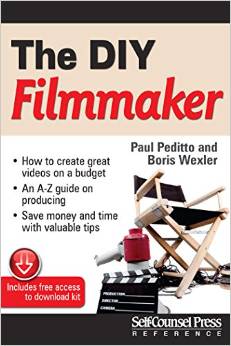- SHOW US THE MOVIE IN YOUR MIND
Dump the screenwriting lingo, if possible. Fight to not write BACK TO SCENE, or SMASH CUT TO, or INSERT, or POV. Return to the character name in description. For instance, instead of this:
INT. CAR- SUNDAY MORNING
Traffic is at a standstill in the shadow of Soldier Field. Professor Pauly stuck behind the wheel, rolling down his window, feels the cold November Bear air.
FANTASY SEQUENCE
Aaron Rodgers throws for one- two- three touchdowns against the feeble Bear defense.
BACK TO SCENE
Professor Pauly with a smile, rolls the window up, the damn Bear air too cold.
Try this:
INT. CAR- SUNDAY MORNING
Traffic at a standstill in the shadow of Soldier Field. Professor Pauly stuck behind the wheel, rolls down his window, feels the cold November Bear air.
FANTASY- AARON RODGERS
Throws one-two-three touchdown against the feeble Bears.
PROFESSOR PAULY
Smiling as rolls the window up, the damn Bear air too cold.
- VERBS & VOICE, ACTIVE NOT PASSIVE
Dump every is running, is playing, are jumping, are cleaning. Keep your writing active, not passive. Efficient use of commas in your screen description will eliminate the need for is and are altogether.
INT. SYD’S OFFICE- NIGHT
Muzac is playing background. Syd is on the computer, hunched over late-night work. The cleaning crew is emptying waste baskets.
Versus….
INT. SYD’S OFFICE- NIGHT
Muzac sounds, Syd on the computer, hunched over late-night work. The cleaning crew empties waste baskets.
- AVOID POINTLESS ACTION LINES
The general rule of thumb is don’t let a page of pure dialogue go by without description breaks. That doesn’t mean you should jam your script with useless and boring filler for the sake of breaking up dialogue. I see this far too much…
Waldo looks down.
Waldo turns around.
Waldo smiles.
Tweetie looks to Putty Tat.
Putty Tat glares.
- NO BEGINS TO, STARTS TO, CONTINUES TO
Get to the verb. Why screw around? This, obviously, doesn’t include a situation like…
Jerry starts up the car, which is fine and proper.
Jerry starts to start up the car, is not.
- GO VERTICAL
Very aware of this one recently writing my micro-budget thriller. How screen description is spaced out on the page is critical. Keep the reader’s eye moving down the page, going vertical, not side-to-side, and you can’t go wrong. Here’s a page from previously mentioned thriller….
INT. ANNIE’S CHAT ROOM- NIGHT
Annie, hiding behind the door, peers out…
Moving…
Toward her room… Falcon.
INT. CHAT OFFICE HALLWAY- SAME
Making his way toward her, gun in hand.
INT. ANNIE’S CHAT ROOM- SAME
Annie, closing the door fast. Trapped, up against it, paralyzed.
No where to run.
INT. CHAT OFFICE HALLWAY- SAME
Falcon stops at Annie’s door.
INT. ANNIE’S CHAT ROOM
Noise from the computer– the sound of chat, making a TWEET.
Annie gasps, too far away to mute it, unable to stop the sound.
Tweet…
Tweet…
HALLWAY
Hearing the sounds, breathing the weight of the world… Falcon at the door…
Moving…
On down the line.
Moving for the staircase, he drops the gun as he hits the door.
- QUESTION AUTHORITY
Any time some guru or know it all with a skimpy IMDB profile tells you something MUST be done this way or that, don’t be a lemming and accept it. Question it. Question from whom the advice comes. That includes me, folks.
0



